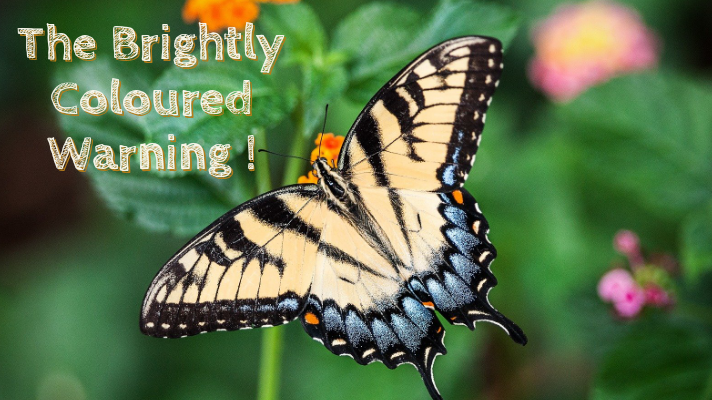
Who won’t get attracted to the yellow and black patterned wings of the Monarch butterfly? It may be surprising to know that not everyone like this tweeny bright coloured beautiful looking creatures!! Because, these bright colours are the warning signals that says “don’t eat them! They may give you a bad tummy”. Yes, this is another wonder of nature, a defence mechanism via the means of colouration and this colouration depicts that the organism can be toxic, distasteful or venomous etc. This type of defensive mechanism is known as aposematism. (Poulton, 1890)
Aposematism works on its best if the organisms are easily detectable and memorable. Most of the aposematic patterns, bright colours combined with patches of black extend across the body with high contrasting boundaries. The toxins paired with the bright colour are mostly “hidden” and cannot be accessed until an attack takes place. Now, the question arises, how its beneficial to the organism? Protection is of course the answer! But still how a bright colour fails to attract the predator? The answer is predators like to play it safe. They do not want to take risk and are not experimentalists. If the predators have a choice between an unfamiliar prey and a familiar one, the predators tend to choose the familiar prey as they do not want to get attacked with poisons from the prey, costs it foraging and mating time or digestion costs (Mappes1, 2005).
Associating toxins with the coloration does not look like an easy job at all. Then why take the pain instead of just a dab of colours. Just like predators, preys also do not want the risk. Evolution may add to the memory of the predator that “it’s just a dab of colours, have a good meal” (Thomas N Sherratt, 2003).
Camouflaging also demands the species to be in immobile and freezing position (T.Stankowich, 2010). Then why not aposematism which gives freedom of mobility when its freedom is reduced in crypsis and camouflaging. Species which uses this warning colouration includes the larva and adult stages of the monarch butterfly as mentioned above. The predators of the butterfly will vomit after a monarch meal because of the poison retained in the body of the butterfly from the milkweed it has taken. The deadly coral snakes use its coloured rings to warn other species about its toxic venom. The bright red colour of the granular poison frog is vibrant enough to scare its predator off!
And yes, “plagiarism” exists in the animal world too. Look alike of the monarch butterfly exists but without the toxin. Viceroy butterfly mimic monarch butterfly as a means of escape from predators, harmless king snake resembling the venomous coral snake. An interesting aposematic behaviour is observed in the Milkweed bug in which the bright red coloured insect become cool in front of predators by having toxins. The Milkweed bug feeding on the milkweed species, which is toxic to others, absorbs the toxins from the plant sap. But note that not every aposematic organism is like “Milkweed bugs”, there also exists “Viceroy butterfly” types as well. Bright black and white coloured skunk is an example for this. Just like viceroy butterfly without toxins skunk’s bright colouration is just a warning and doesn’t contain toxins.
So next time when your eyes catch a “bright colour” among the greens or woods, just think do they really give a bad tummy or just scare you off ??
REFERENCES:
Mappes1, J. (2005). The complex business of survival. Science Direct.
Poulton, E. B. (1890). The colours of animals, their meaning and use, especially considered in the case
of insects. New York.
T.Stankowich. (2010). Encyclopedia of Animal Behaviour.
Thomas N Sherratt, C. D. (2003). The evolution of warning signals as reliable indicators of prey
defense. The American Naturalist 162, 377-389.
By Kunjulakshmi R

Kunjulakshmi R is a third year BS MS student from IISER Berhampur. She is a budding biologist who is learning the emotions of science. “Life is like a novel. You don’t know what is next unless you turn the next page” – Sidney Sheldon. So, just like that, she is still turning the pages of her scientific novel.